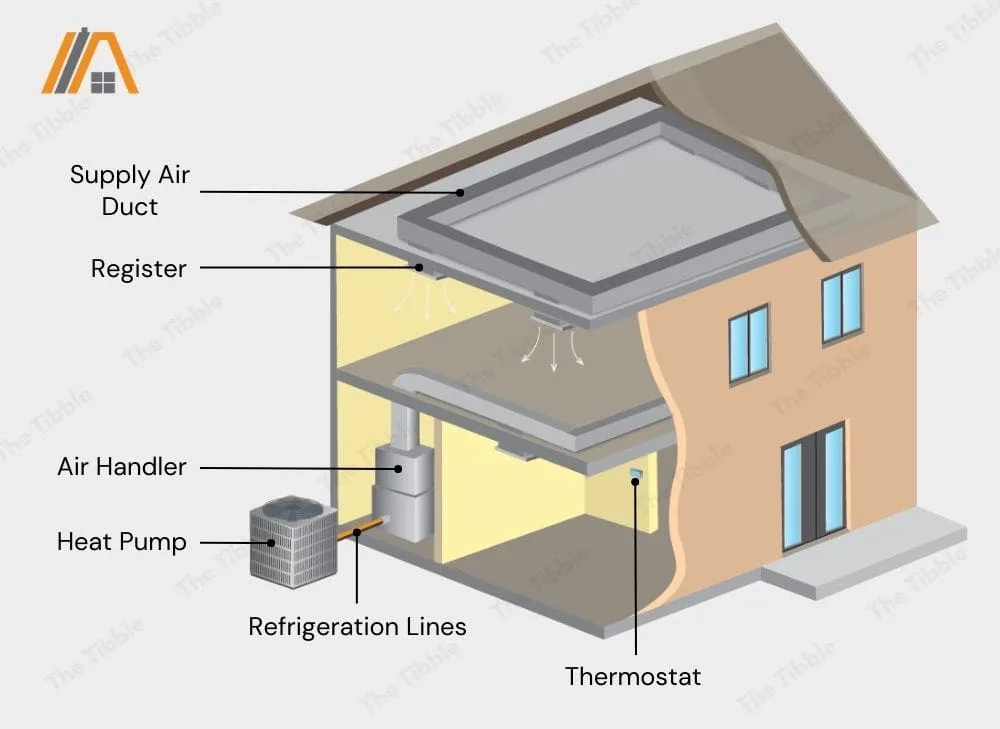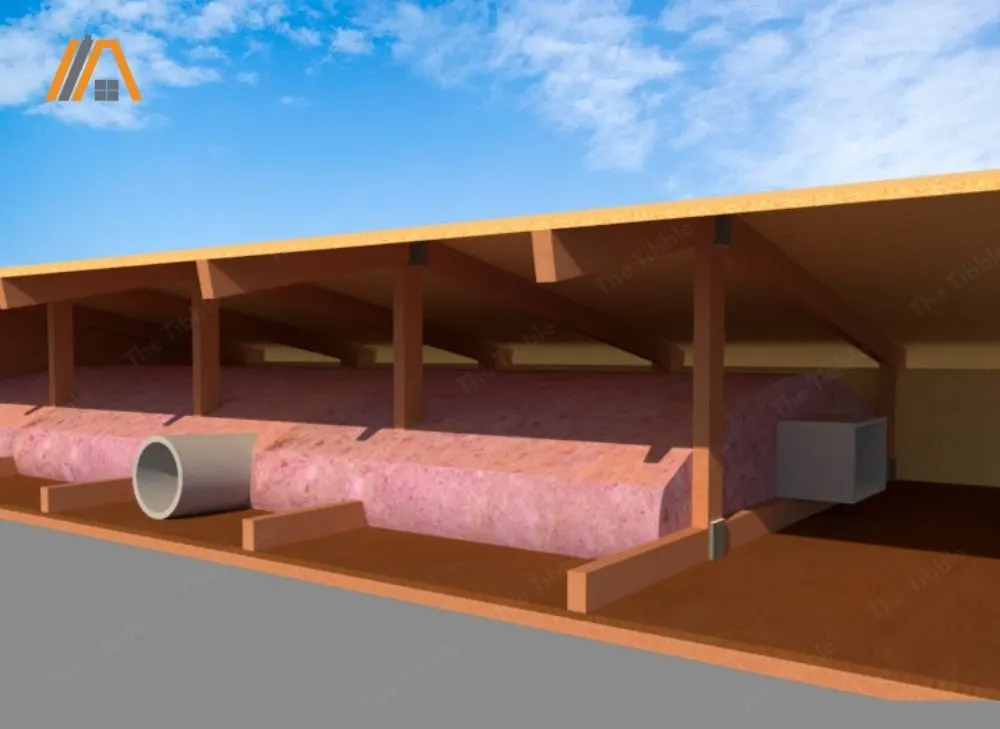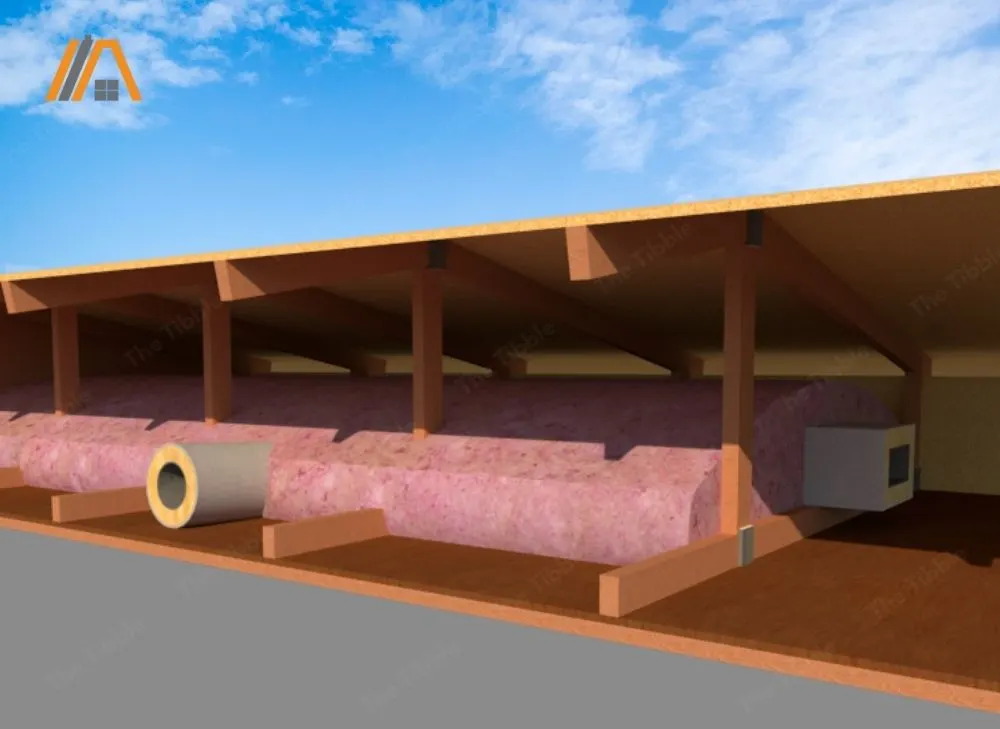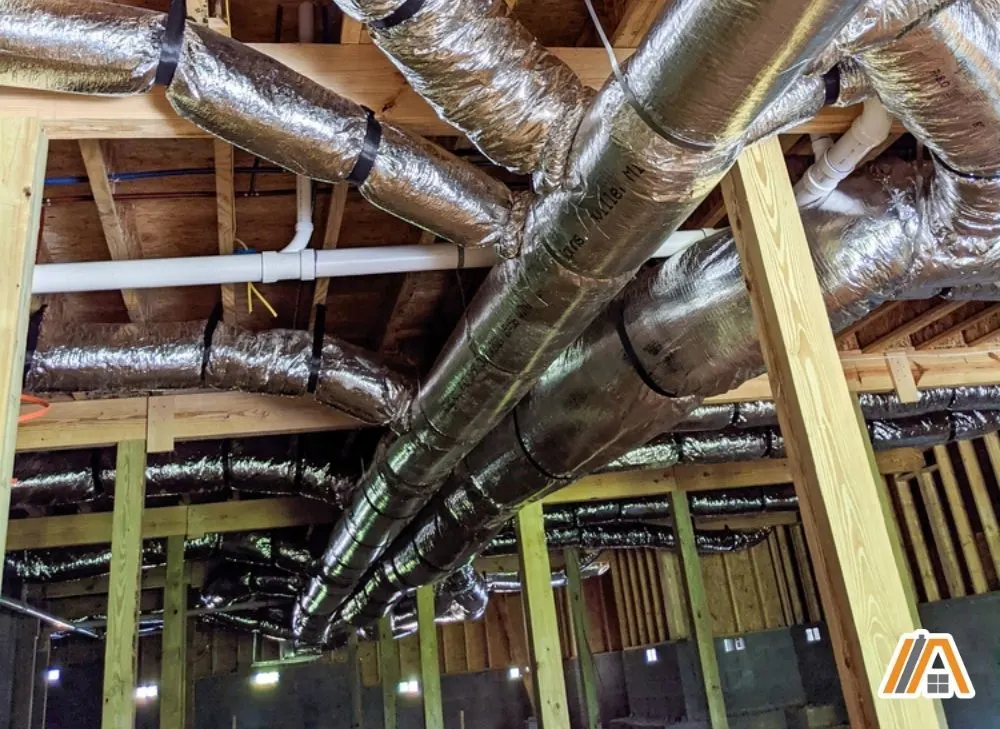There’re many benefits of insulating ducts. Ducts often run through spaces in which insulation is installed. So, burying them in insulation seems like a killing-two-birds-with-one-stone situation.
Yet, if you end up making the wrong call when it comes to your home’s thermal envelope, you can end up paying (literally) a steep price. This is why we must do our research; mine is compiled here to simplify your job.

Ducts can be buried in ceiling insulation as a method for including them in conditioned space, which significantly impacts HVAC function and efficiency. However, the duct itself must still be insulated in addition to the insulation that it is buried in.
Ducts Are Allowed to Be Buried in Insulation
The International Residential Code (IRC) is the code that governs the majority of domestic residences. Almost all US states and territories adopt the IRC. Wisconsin is the exception.
While each state and territory is able to adjust the regulations in the IRC to better suit the region and other laws of the area, it is safe to use what we find in the IRC as the basis for our discussion.
The IRC permits ducts to be buried in insulation. There are two sections that specifically cover this:
- Section N1103.3.2; list item 2
- Section N1103.3.3
The practice of burying ducts in insulation has many benefits to home efficiency and poses no real risk, despite the common misconception that hot ducts touching insulation is a fire risk.
The Relevance of Burying Ducts In Insulation
The fact that the IRC permits ducts to be buried in insulation is relevant because the insulation requirements for ducts depend on if they run through conditioned spaces versus unconditioned spaces, and being buried in insulation can class them as running through conditioned space.
The second list item in Section N1103.3.2 of the IRC covers this in the context of insulation in ventilated attics and stipulates that:
- The air handler must be within the envelope and air barrier of the home.

- The duct leakage (conditioned air that escapes from duct seams, seals, and cracks) must not be more than 1.5 ft3/minute per 100 ft2 of conditioned floor area that the duct serves.
- The ceiling insulation value at the sides and top of the duct must equal or exceed the recommended R-value minus the R-value of the duct’s insulation.
Ducts Must Also Be Insulated Separately
It is important to remember that the insulation that any duct is buried in is not considered part of or in place of duct insulation. You will still need to provide insulation specifically for the duct.
This optimizes HVAC function and reduces condensation, while also preventing ducts from sweating in the insulation because of the humid climate.
Section N1103.3.3 describes the insulation requirements for these buried or partially buried supply and return ducts (except for sections of supply ducts up to three feet from the supply outlet):
- Insulation to a value of at least R8 must be provided for the ducts.
- The summative R-value of insulation surrounding the length of the duct (in which it is buried) must be a minimum of R19. This is without counting the duct’s individual insulation thickness.
- The climate zone is also considered, with Zones 0-3A needing ducts to be completely buried in insulation that is at least R13 and is compliant with vapor retarder regulations.
Section N1101.7 of the IRC lists all the different climate zones and moisture divisions within each state.
For example, Texas contains the following zones: 1A, 2A, 3A, 2B, 3B, and 4B. Since there are parts of the state that fall within the exception zones (0A, 1A, 2A, and 3A), it means that there are several places in Texas that will need ducts buried in R13 ceiling insulation.
Comparatively, Arizona contains 2B, 3B, 4B, and 5B, meaning that the exception is not applicable within its hot and arid climate.
Section N1103.3.3.1 looks specifically at deeply buried ducts and states that these ducts are considered to have duct insulation with an R-value of R25 if:
- The duct is installed within 5.5 inches of the ceiling (including when it is installed directly on the ceiling).
- The insulation surrounding the duct has an R-value of R30 or higher.
- The insulation is blown-in.
- The duct is 3.5 inches or more below the surface of the insulation.
Why Is This Required?
Insulation around ducting is essential to efficient function and also to the protection of the insulation in your ceilings and walls.
The insulation provided by burying the ducts may not be sufficient to stand in for the amount of insulation needed for the duct run.

In addition, and arguably more importantly, there is a difference between insulation in which ducts are buried and insulation that is wrapped around the ducts.
When ducts are just buried in loose-fill insulation, this insulation can shift and move around them and air gaps can exist between the insulation and the ducts.
In a ventilated attic, this means that hot outside air can come into contact with the ducts that are carrying cold air from exhaust systems or the HVAC system.
When this happens, condensation can form on the outside of the ducts. It also affects the airflow through the ducts but we look at this in the last section.
Condensation on the outside of ducts can then seep into the surrounding insulation material. There are several potential negative consequences of insulation getting wet, including:
- Mold growth
- Reduced insulating capacity
- Leaching fire-retardant chemicals (reduced fire resistance)
- Holding moisture against the home’s framing (rusting/rotting)
Why Ducts Should Be Buried in Insulation
If you have to insulate the ducts separately anyway, then why bother burying them in the insulation at all?

There are actually several reasons for taking this approach.
Often the Easiest Installation Method
When it comes to burying ducts in insulation, most people are actually asking if it’s allowed as opposed to if it is necessary.
The reason for this is that it is much easier to just blow loose-fill insulation over ducting than try and rig up a protective barrier to prevent this or somehow propping the ductwork above the layer of insulation.
It also means that you don’t have to try and problem-solve what to do with all the extra space and air pockets around the ducting or make your walls thick enough to have the ducts and insulation running separately.
Compressing Insulation Is Not a Good Idea
Ducting may be hollow, but that doesn’t make it lightweight or compact. Ducting is generally supported at intervals that distribute the weight of the run to ensure that it doesn’t warp and cause issues.
However, there is still a level of pressure on any insulation under the ductwork. Therefore, one of the things we endeavor to avoid is compressed insulation, which can result from heavy ducts resting on the material.
The problem is that when insulation is compressed, even though the R-value per inch increases, the number of inches (thickness) decreases. So, the R-value you thought you had in your ceiling is reduced, which will cost you in HVAC function and utility bills.
By installing the insulation around the ducting, we ensure that sufficient R-value is achieved, without shoving it all underneath which, along with the ductwork weight, would compress the material.
Ducts Are Best Installed Within Building Envelopes
Ducts function most optimally within the conditioned space of your home because they are protected from significant differences in air temperature.
Protecting ducts from this allows HVAC systems to function more effectively, saving energy, so it’s always better to have ducts within the building envelope.
However, with the size of ducting, it’s not ideal to have them running through your living spaces. It’s much easier to run them through an attic, crawl space, or even outside the house.

In this case, we have to find an alternative way to protect the ducts and our HVAC function when they aren’t usually insulated for unconditioned environments. So, it makes more sense to properly insulate the ducting and then bury it within insulation in unconditioned spaces.
Additional Benefits of Insulating Ducts
Energy Usage
First, we have the efficiency of the system. Insulation prevents the transfer of heat in or out of the duct. This helps reduce energy usage by getting the most out of the air conditioned by heating or A/C, because the system works less since it doesn’t need to compensate for lost heat/cold.
It is better for greener living and eco-friendliness since there is pollution from the processes that produce much of the energy in the electrical grid. So, using less electricity means that pollution is slightly reduced.
Cost Savings
Of course, you also have the reward of saving money because the more efficient your HVAC system is, the less energy it needs, and the less you have to pay in electricity bills.
Noise
Insulation also reduces the noise that air moving through the ducts creates, meaning you have less noise pollution in your homes. Personally, I’m always glad to minimize strange thumps and rattling.
Sources
https://basc.pnnl.gov/resource-guides/ducts-buried-attic-insulation
https://hvac-blog.acca.org/ok-bury-ducts-attic-insulation/
https://zeroenergyproject.com/2016/12/16/place-ducts-inside-building-envelope/
https://aeroseal.com/air-duct-sealing-blog/duct-leakage-101-what-is-duct-leakage/
